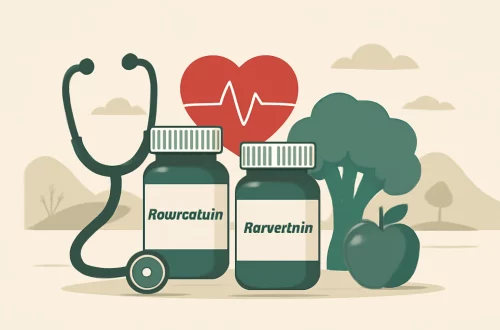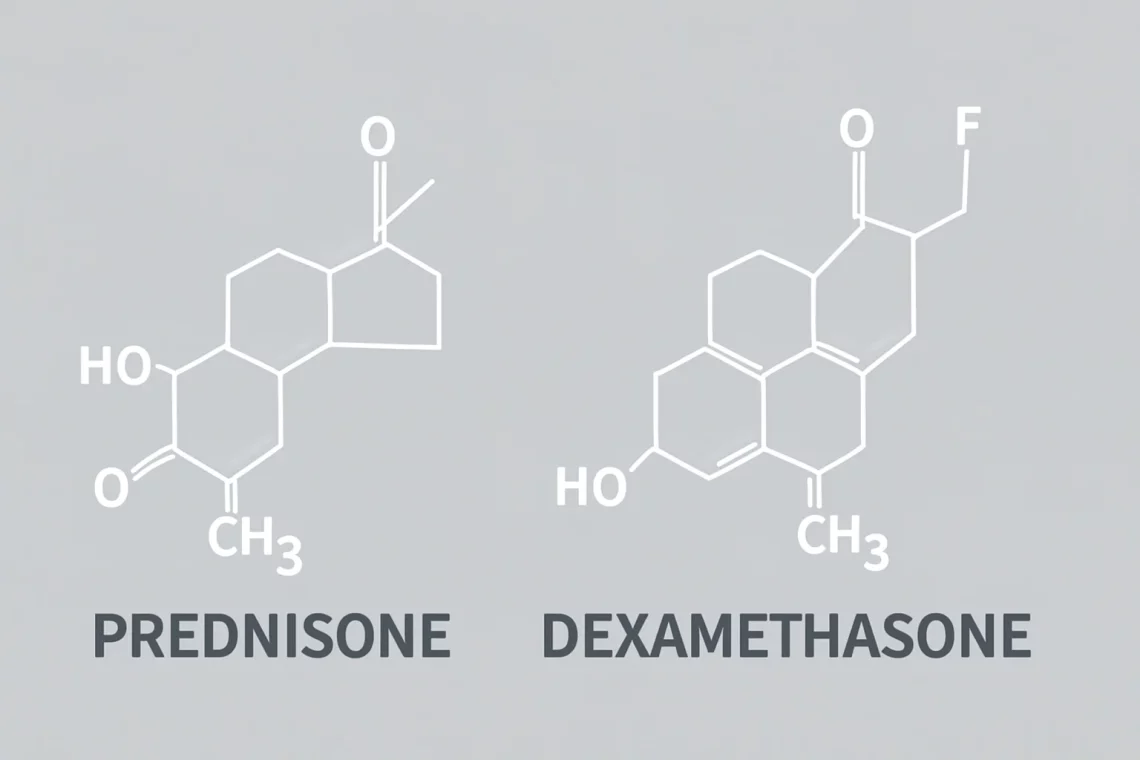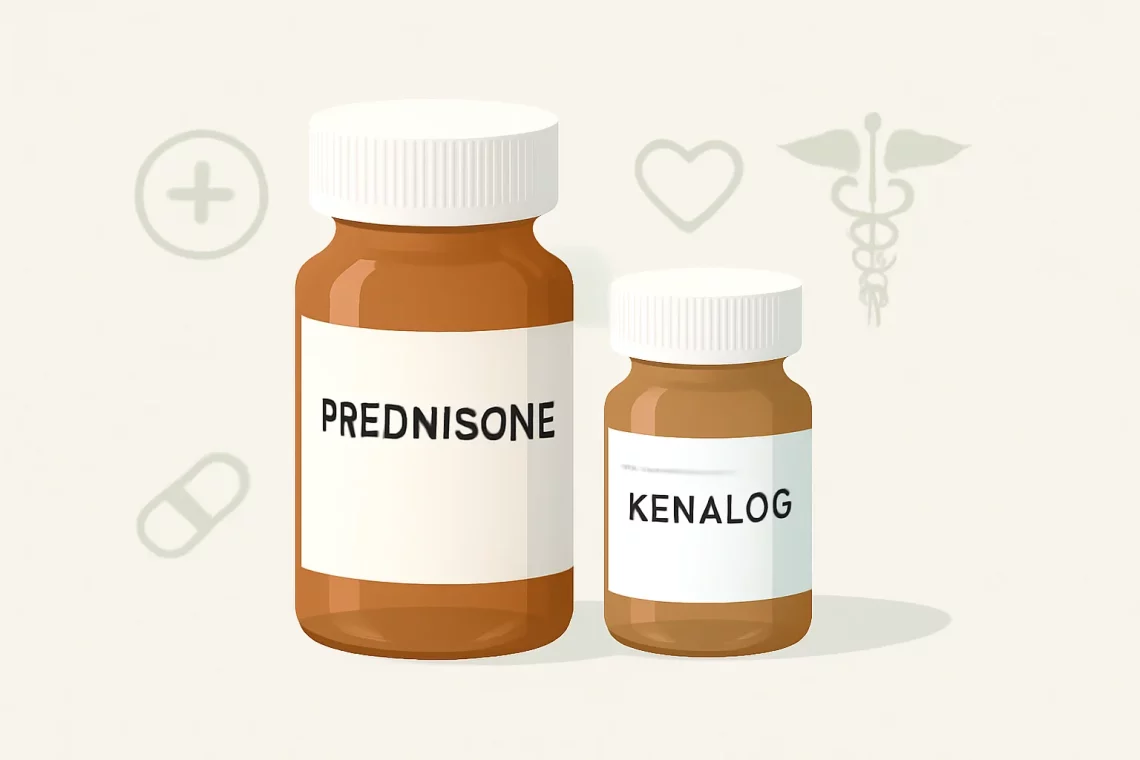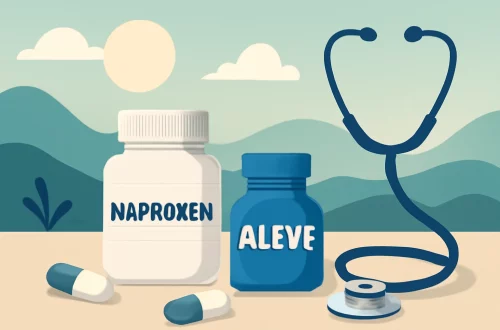-
Prednisone vs Methylprednisolone: Which Is Right for You?
Prednisone and methylprednisolone are both corticosteroids that play a crucial role in the management of various inflammatory and autoimmune conditions. These medications are synthetic derivatives of cortisol, a hormone produced by the adrenal glands. They work by mimicking the effects of cortisol, thus helping to reduce inflammation, suppress the immune system, and alleviate symptoms related to a wide range of disorders, including allergies, asthma, rheumatoid arthritis, and certain skin conditions. While both medications share many similarities in their mechanism of action and therapeutic uses, they also have distinct differences that may influence a healthcare provider’s choice when prescribing treatment. Factors such as the severity of the condition, the patient’s overall…
-
Prednisone vs Triamcinolone: Key Differences and Uses Explained
Prednisone and triamcinolone are both corticosteroids, widely used in the medical field to treat a variety of health conditions. These medications are synthetic derivatives of natural hormones produced by the adrenal glands, primarily responsible for regulating inflammation and immune responses in the body. While they share a common purpose in alleviating symptoms associated with inflammatory and autoimmune disorders, their specific applications, mechanisms of action, and side effects can differ significantly. The importance of understanding the differences between these two medications lies in their varying effectiveness for particular conditions, as well as their distinct side effect profiles. Patients and healthcare providers alike must navigate these differences to determine the most appropriate…
-
Prednisone vs Dexamethasone: Key Differences and Uses Explained
Prednisone and dexamethasone are two widely used corticosteroids that play significant roles in the treatment of various medical conditions. These synthetic drugs mimic the effects of hormones produced by the adrenal glands, which are essential for regulating metabolism, immune response, and inflammation in the body. While both medications share similarities, they also possess distinct characteristics that influence their use in clinical practice. Understanding the differences between prednisone and dexamethasone is crucial for healthcare professionals and patients alike. The choice of one over the other can significantly affect treatment outcomes, side effects, and overall patient experience. As corticosteroids, both medications can effectively manage conditions such as allergic reactions, autoimmune diseases, and…
-
Prednisone vs Kenalog: Key Differences and Uses Explained
Prednisone and Kenalog are two medications often utilized for their anti-inflammatory and immunosuppressive properties. While both drugs can be effective in treating a variety of conditions, they differ significantly in their composition, mechanisms of action, and the specific situations in which they are used. Understanding these differences is crucial for patients and healthcare providers alike, as it can significantly influence treatment decisions. Prednisone is a synthetic corticosteroid that mimics the effects of cortisol, a hormone produced by the adrenal glands. It is widely prescribed for conditions such as asthma, allergies, arthritis, and autoimmune diseases due to its ability to reduce inflammation and suppress the immune system. On the other hand,…
-
The Worst Foods for Your Lymphatic System You Should Avoid
The lymphatic system plays a vital role in maintaining overall health by facilitating the removal of toxins, waste, and other unwanted materials from the body. This intricate network of vessels, tissues, and organs is essential for proper immune function and fluid balance. However, certain dietary choices can significantly impact the efficiency of this system, leading to potential health issues. Understanding which foods can sabotage your lymphatic system is crucial for maintaining optimal health. Making informed dietary decisions can help support lymphatic drainage and overall well-being. In today’s fast-paced world, many individuals find it challenging to prioritize their health, often opting for convenience over nutrition. Unfortunately, this can lead to the…
-
Symptoms of Tooth Infection Spreading to the Brain You Should Know
Tooth infections are more than just a dental nuisance; they can have serious implications for your overall health if left untreated. The mouth is a complex ecosystem, teeming with bacteria that can cause infections when a tooth becomes decayed or damaged. These infections can progress in severity, leading to potentially life-threatening complications, especially if they spread beyond the oral cavity. One of the most alarming risks associated with untreated tooth infections is the possibility of the infection spreading to the brain. Understanding the symptoms and implications of such a scenario is crucial for timely intervention. A tooth infection can begin as a localized issue, often manifested by pain, swelling, or…
-
Spondylosis vs Spondylitis Understanding the Key Differences
Spondylosis and spondylitis are two terms often encountered in discussions about spinal health, yet they represent distinctly different conditions. Understanding these differences is crucial for anyone seeking to grasp the complexities of spinal disorders. The spine, a vital structure in the human body, not only provides support but also protects the spinal cord, which is essential for nerve function. As we age or due to certain lifestyle choices, our spinal health can be compromised, leading to various conditions. Both spondylosis and spondylitis can manifest with similar symptoms, such as back pain and stiffness; however, their underlying mechanisms and implications for treatment differ significantly. Spondylosis typically refers to age-related wear and…
-
Spondylosis vs Spondylitis: Understanding Key Differences and Symptoms
Spondylosis and spondylitis are two terms often encountered in discussions about spinal health, yet they represent distinct conditions that affect the spine differently. Both conditions can lead to discomfort and mobility issues, but understanding their differences is crucial for accurate diagnosis and effective treatment. These conditions can arise from various factors, including age, lifestyle, and underlying health issues, which contribute to their unique symptoms and implications. Spondylosis is generally associated with degenerative changes in the spine, often due to wear and tear over time. It may manifest as osteoarthritis of the spine, leading to the formation of bone spurs and loss of flexibility. This condition is common among older adults…
-
Effective Homeopathic Remedies for Conjunctivitis Relief
Conjunctivitis, commonly known as pink eye, is an inflammation of the conjunctiva, the thin membrane that covers the white part of the eye and lines the eyelids. This condition can be caused by various factors, including bacterial or viral infections, allergens, and irritants. Symptoms often include redness, itching, swelling, and discharge from the eye, which can significantly impact one’s daily life. While conventional treatments such as antibiotic drops or antihistamines are commonly prescribed, many individuals are seeking alternative methods to alleviate the discomfort associated with conjunctivitis. Homeopathy, a system of medicine that utilizes highly diluted substances to stimulate the body’s healing processes, has gained popularity as a gentle and effective…
-
Effective Homeopathic Remedies for Treating Boils Naturally
Homeopathy is a holistic approach to healing that has gained popularity over the years due to its natural and gentle methods. It focuses on treating the individual as a whole rather than just addressing specific symptoms. One common ailment that can be effectively treated through homeopathic remedies is boils. These painful, pus-filled bumps on the skin can be both uncomfortable and unsightly, leading many to seek out natural solutions for relief. The practice of homeopathy operates on the principle of “like cures like,” which means that substances that cause symptoms in a healthy person can, in minute doses, treat similar symptoms in an ill person. This philosophy aligns well with…







































